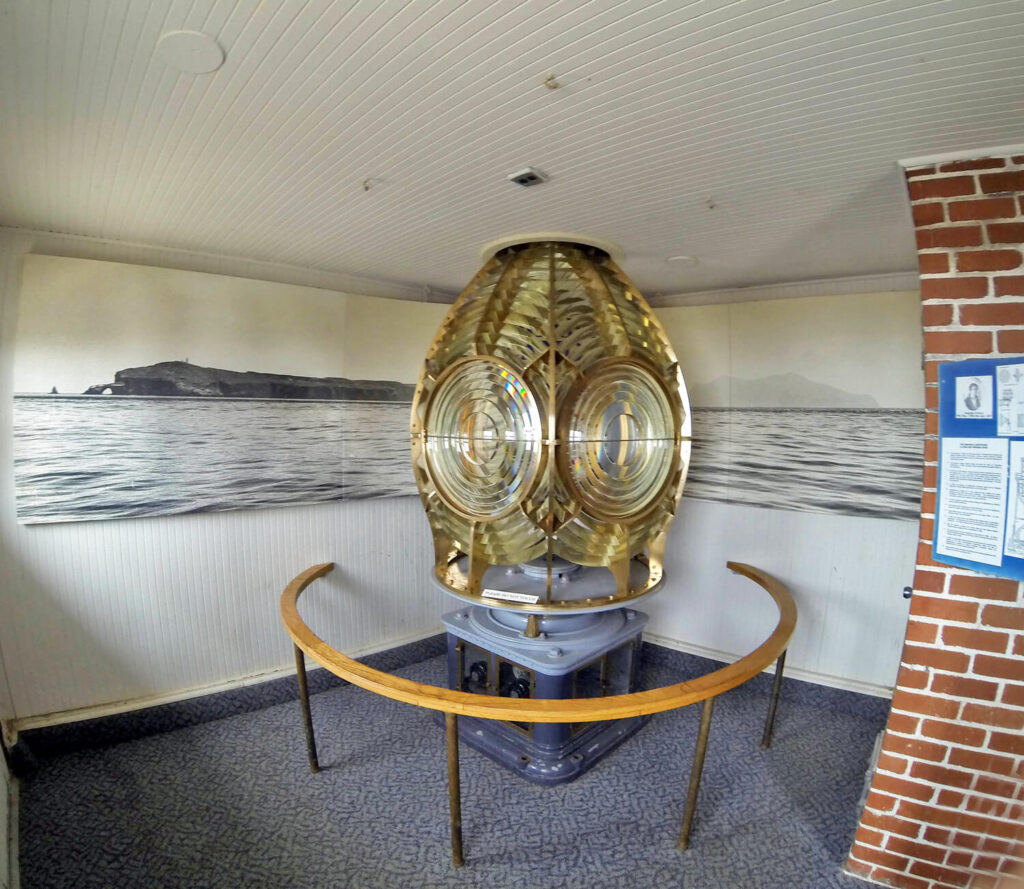
Photo by Chris Stankee
In the visitor center we admired the lighthouse’s original lens, a massive egg-shaped arrangement of rounded segments of thick ground crystal giving off prismatic reflections, in an orbital framework of bronze. Its Art Deco effect was intricate and symmetrical, graceful, like a work of art—a giant Fabergé egg. I told Chris, “One time in the ’eighties I bicycled with a friend from San Francisco to the lighthouse at Point Reyes, and toured around it. The lightkeeper told me about its original French-made Fresnel lens, how it amplified the light by many thousands of . . .” (with an unscientific grin) “um, light units?”
Demonstrating how my boyhood fascination continued into adulthood, I went on, “Later that same year I visited a lighthouse in Negril, Jamaica, and the keeper there showed me their old Fresnel lens. It was damaged and missing some parts, but the man loved it, and wished he could restore it. He shook his head and said he had no idea how to find parts for it. So later I wrote to the keeper at Point Reyes and asked if he could do anything to help his Jamaican brother. I never heard anything more about it, but hoped I had somehow helped.” (A Fresnel lens is also an important plot point in Jimmy Buffett’s A Salty Piece of Land.)
Then I said, “Funny—the other ambition I remember was wanting to be a forest ranger—and here I am, among both.”
As we walked through the heath of low plants and dry brown coreopsis shrubs, standing white gulls dotted the dry ground in every direction, like bowling pins. Many of their young were quite large now, though still with their “cryptic coloration,” and a gangly, adolescent look. Some of the parents were overly protective, jumping into the air to circle overhead and strafe us. Chris had a good laugh when one of them dropped some “ordnance” on me, all across my chest and the back of my pants.
As I posed for a portrait of my anointing, Chris said, “Obviously not a Rush fan.”

Photo by Chris Stankee
The ranger we had met on the dock overtook us near the park buildings, which seemed mostly to date back to the manned lighthouse era of the 1930s—and all the more charming for that. The ranger told us he was about to check on the water tanks, and offered to show us “something most people don’t get to see.” That was an irresistible invitation, and we met him at the two-storey frame building that resembled a small church.
Along the way I spotted a wren, with its characteristic upturned tail flicking among the coreopsis. (Bewick’s wren, since you ask.) Seabirds dominated the island visually, but many songbirds also nested there—especially since the rats have been eradicated.
The ranger led us inside, into a vast space warm with unfinished wood and light filtered through old glass. Two enormous redwood cisterns, like huge barrels, were built by the Bureau of Lighthouses in the 1930s. They held 55,000 gallons of water, all delivered by ship and pumped up through underground pipes from the dock.
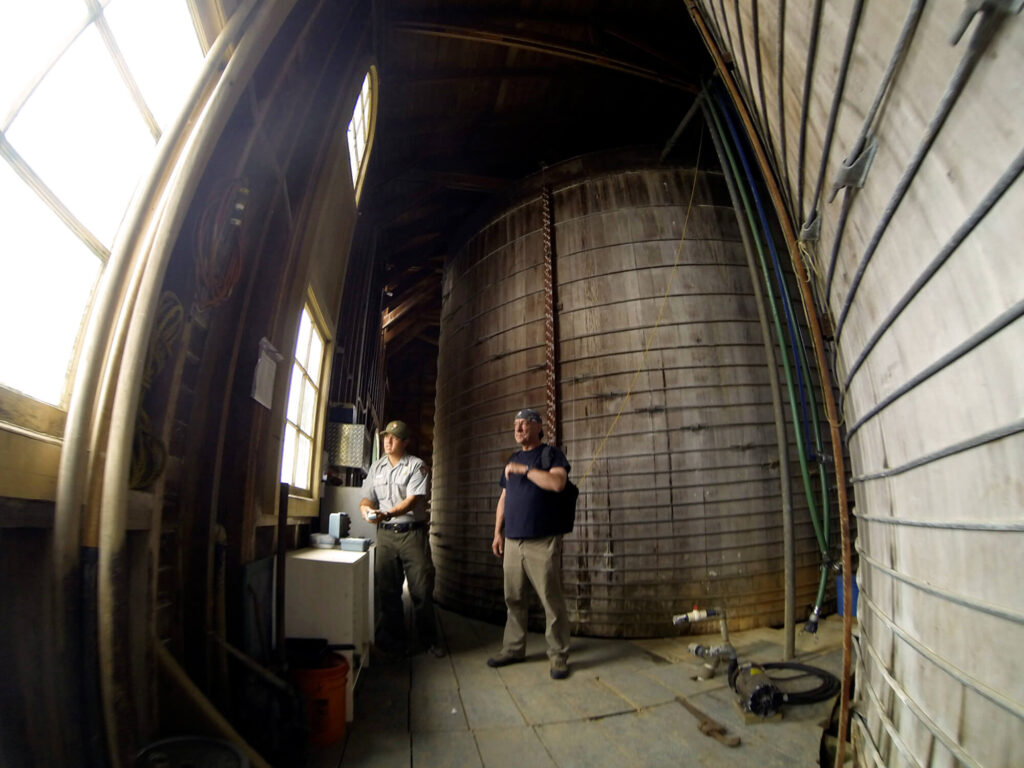
Photo by Chris Stankee
As Chris and I prepared to hike onward, glad of the cool overcast, a pair of older ladies in outdoor clothing walked by. The ranger told me they were botanists, and I asked them about a couple of the small flowering plants nearby, and they told me their names—gumplant, pale buckwheat, and tiny blue flowers called phacelia. (Prettier when spoken, “fa-kay-lee-ah.”)
The ladies told me one of their main projects was trying to remove the red-flowered iceplant, a South African groundcover brought in by the Bureau of Lighthouses to combat the erosion caused by overgrazing—that cycle again. (Later Chris remarked about the ranger and the botanists, “Those people just light up when they see you!” I guess they sense my genuine interest in what they’re doing, which must be rare in their professions. To me, they are rockstars!)
I told one of the ladies about a realization that had dawned on me only recently, as I gradually assembled the complicated mosaic of California’s history. Looking at the hills of Central California, for example, the rolling golden grasslands dotted with dark live-oak trees that I always called the “lion-colored hills,” I knew that for maybe 200 years ranchers had spread grasses and grains that cows liked to eat, displacing the native vegetation permanently. Sadly, we will never know what it really looked like before, because you might replace and restore everything else in a national forest, or on an island, but it would be impossible to change the grass.
I suggested my distant hope, “Maybe in a hundred years or so genetic engineering will be able to alter introduced grasses back to the native species.”
She smiled and said, “Maybe.”
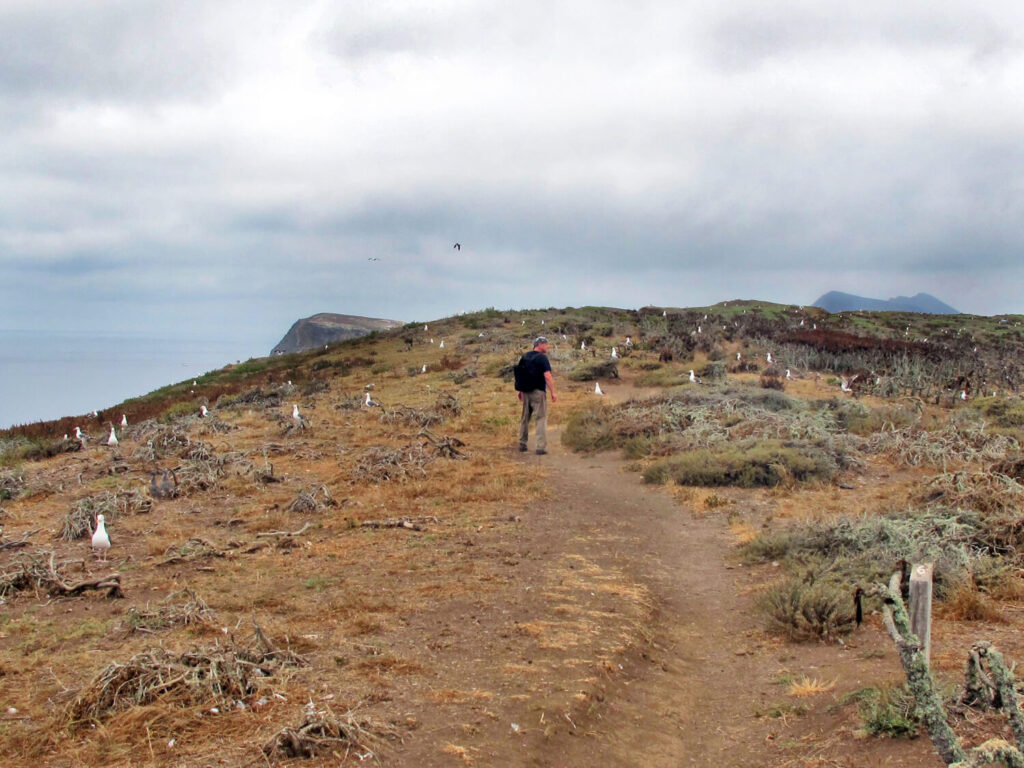
The gray sky and attenuated light suited the mood of Anacapa—Mirage Island. Among the coreopsis in summer brown and the parched grass (California’s five-year drought was felt out there, too), the gulls dotted the landscape all around, motionless and alert. Farther along the trail I saw a group of four oldish men down on their hands and knees in the windswept foliage. Likewise garbed in sturdy outdoor wear, they were digging up iceplant. One of them looked up at Chris and me and said, “Hi there! We’ve got a few extra tools if you want to pitch in!”
I laughed and said, “Yeah, we’ll be back a little later—after we talk to the birds for a while.”
In a friendly manner, he said, “What brings you out here to Anacapa?” and I replied, “Just curiosity, really. I love places like this, and I’m trying to visit each of the islands, and hopefully get to all eight.”
He smiled and said, “I almost wore that hat today—I’m number one-forty-four.” Right away I knew he meant the All Eight Club, and felt a twinge of envy—not the poison kind, the inspiring kind. I had seen only 153 names on that list, so he was fairly recent. I told him which islands I had visited, and mentioned that I had been hoping to get to San Miguel on this trip. He told me about hiking right across it, from the west side to the old ranch site (the background for much of T. C. Boyle’s San Miguel). I said, “Oh, I want to do that!”
I had expressed that wish to our ranger friend as well, and he told me that Ranger Williams was posted on San Miguel at the time, and he was a good guy. If I came ashore at low tide, he would probably let me put my feet in the sand at the water’s edge. (Some technicality, where the ban on visitation started at the high-tide waterline.) But I decided no, I didn’t want to do it like that. I had truly experienced Santa Cruz, Catalina, Santa Barbara, Anacapa, and later that day, would hike on Santa Rosa. I decided to hold out until I could at least walk properly on the other three. Make it mean something, not just a symbolic relay race to earn the All Eight Club pennant.
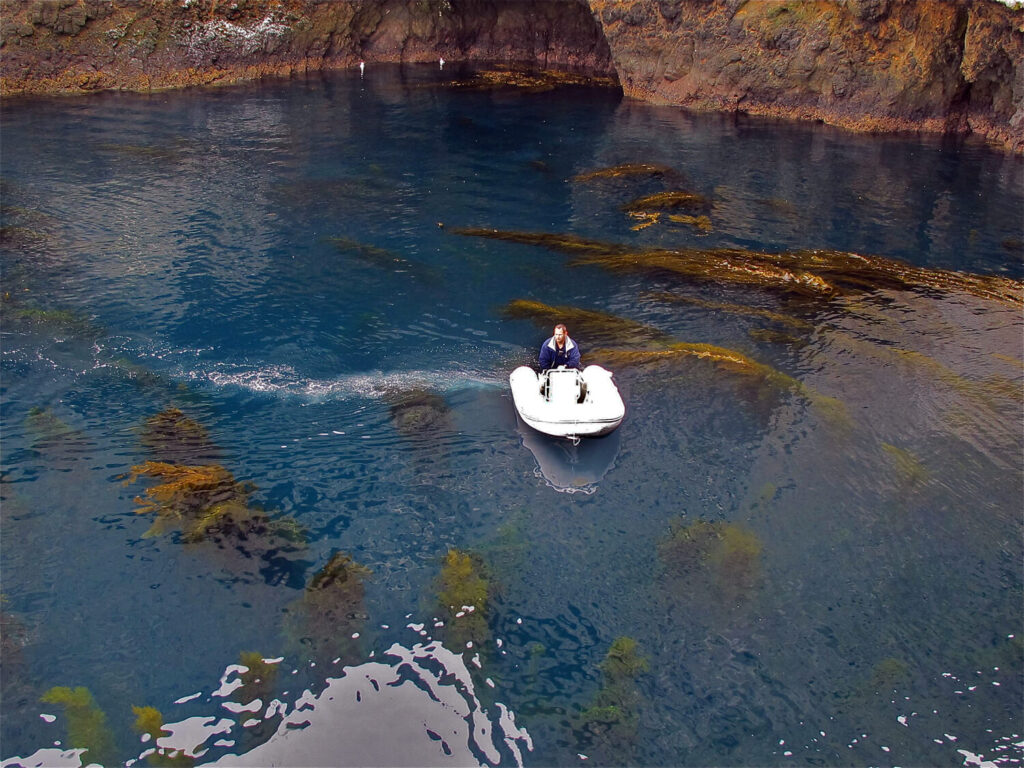
We radioed the SS Obtuse for pickup, and Michael drove the dinghy to the landing in slow arcs, to avoid the long ropes of kelp—part of the rich underwater forest that made the cove a popular scuba diving site. When we had landed, the ranger warned Michael that later there could be divers in the water, and on the way down the stairs I saw a team of wetsuited divers preparing their equipment. The “Diver Down” flag was hoisted, but one of them told me no one was down right then, which I relayed to Michael. The diver said they were getting ready for a “live dive” in twenty minutes, and I smiled at those words and said, “That sounds preferable to the other kind!”
He chuckled and clarified, “I mean they’ll be broadcasting it live,” and I nodded, “I figured that.”
With our anchor raised and the dinghy secured astern, the twin diesel Caterpillars clattered to life with a deep throb. Throttling up to a steady burble, Steve steered the SS Obtuse west and around Middle Anacapa and West Anacapa, then up the long, wild coast of Santa Cruz (the largest Channel Island, it is four times the size of Manhattan). The sky had cleared by early afternoon and ahead of us Santa Rosa glowed in sunlight. We motored through the channel and cruised its eastern shore to look at possible anchorages.
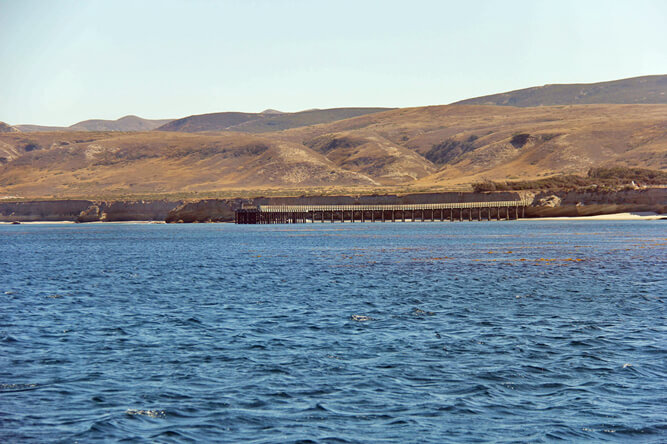
Photo by Michael Mosbach
Settled in Bechers Bay, Michael ferried Chris and me ashore. The pier was massive, over 500 feet long, and had been built in 2009 at a cost of over ten million dollars. Up close you could see the engineering and construction it demanded, the thick pilings interwoven with a network of metal-gridded walkways and stairs—all of it designed to weather the area’s violent storms. Unlike the steep, high ladder we had to scale on Anacapa, not to mention the storm-twisted wreckage I’d climbed on Santa Barbara, this was a much easier reach to the landing ladder.
It was mid-afternoon by then, and I had planned a “flexible hike”—aiming for the island’s highest point (seemed a natural choice—go for the view), at Vail Peak (1589 feet), along a trail called Telephone Road. I suggested to Chris, “Wherever we get to after an hour, we’ll turn around from there,” and he agreed it was a good plan.
We started out passing some of the old buildings from the Vail and Vickers Ranch, one home shaded by a beautiful specimen of the unique Torrey pine species. That ranch represented a history of human settlement on Santa Rosa reaching back at least 13,000 years.
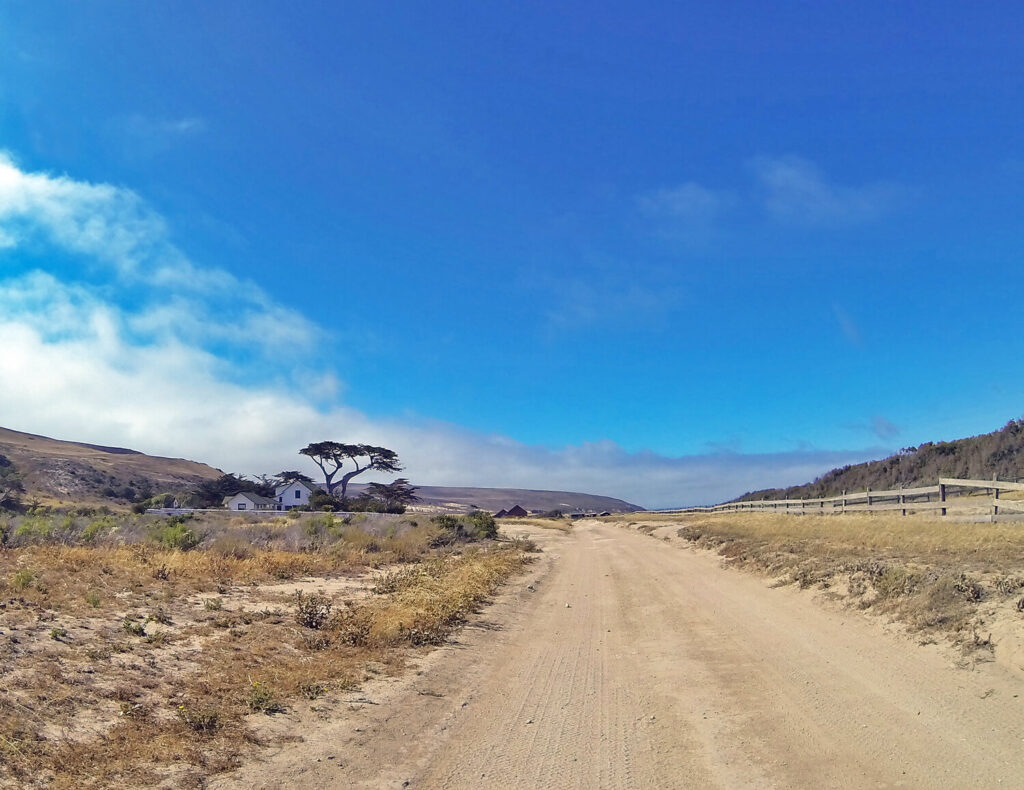
Photo by Chris Stankee
From the National Park Service description of Santa Rosa’s history of habitation:
In addition to the native Chumash, European explorers, Aleut sea otter hunters, Chinese abalone fishermen, Spanish missionaries, Mexican and American ranchers, and the U.S. military all have left their mark on the Santa Rosa landscape. Visitors can see relics of these occupations in remnants of fishing camps, water troughs and fence lines, the buildings and equipment of the historic Vail and Vickers ranch at Bechers Bay, the remains of the military installations, and a great diversity of sites to be discovered all around the island.
After a long slog uphill on the narrow gravel road for an hour or so, we turned around and headed back to the pier. Under a sunny blue sky, the winding canyons and low vegetation offered wide-open panoramas all around, and bright little flowers occasionally appeared among the low scrub. The air tasted wonderful, of desert vegetation and salty air at the same time.
By late afternoon we were back aboard the SS Obtuse, enjoying cocktails and starting to prepare the night’s feast. I had brought a frozen batch of my bolognese sauce, which was thawing in the fridge, as well as a box of bowtie pasta and some fresh Reggiano. Chris had brought the makings of a Caesar salad, so once again, we would not starve.
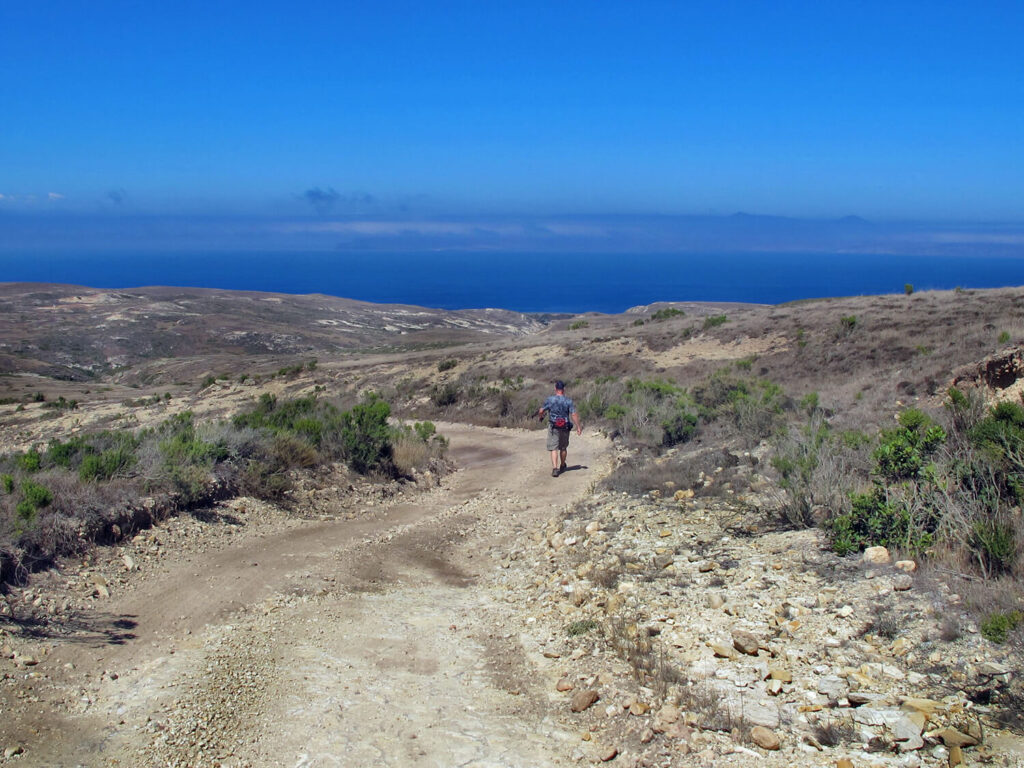
After dinner I sat on the windy foredeck and watched the light fade away, and the first stars appear. I thought about all I had learned about the Channel Islands, and especially about the Europeans who had settled in such a remote place to try to carve out their livings. Yes, they had permanently damaged the “natural world,” but truly unwittingly—not imagining for a moment there was anything wrong with bringing cattle, sheep, pigs, rabbits, and even housecats out there. They were just building a life, and that had to be done, after all.
Judging the people who exploited those islands from our vantage is simply wrong. They were doing what they had to do, and doing what they could—for themselves and their families, the only “metric” that counts, ultimately. A few individuals much higher up the food chain may have been getting wealthy from that exploitation, but those who were actually doing it—the hunters, the ranchers, the farmers, the fishermen—were only trying to make their livelihood, feed their family, the best way they could. They couldn’t help doing what they couldn’t help doing.
And how that phrase has resonated for this observer recently. At closer range, in our own everyday lives, we all encounter people who behave in ways that may annoy us, but ultimately, when you look a little deeper, they can’t help it at all. Acts of aggression, hostility, rudeness, and/ or thoughtlessness are not “deliberate,” in the sense of considered and intentional. Likewise, it is seldom “just the way they’re made”—but rather the way they have been programmed, often from earliest childhood.
I kind of wish that observation had been available to me in my twenties and thirties, as it might have saved me a lot of aggravation and friction. One gift of what I might call a “reflective maturity” is that one mirage has finally cleared a little—the mystery of other people. Over time I have gained a bit of understanding about what makes others tick, and it sometimes helps.
Knowing how shaped we all are by events and people not only out of our control, but sometimes even out of our memory, more and more the quirky or annoying behavior I observe in others starts to feel like it’s “not their fault.” They can’t help doing what they can’t help doing.
Sometimes the extreme scope of that notion—like nothing any of us do is our fault, or our choice—feels overwhelming. Because you start running into people who hurt others and “can’t help themselves.” However, I once defined good behavior as “behaving better than we are”—or at least, “better than we feel.” In other words, being good often takes some effort. Maybe even, like magic, it requires some planning.
People we encounter with insecurities or anger issues likely came by them “honestly,” and they can no more choose to react differently to the world—to you—than they can change the scars that made them that way.
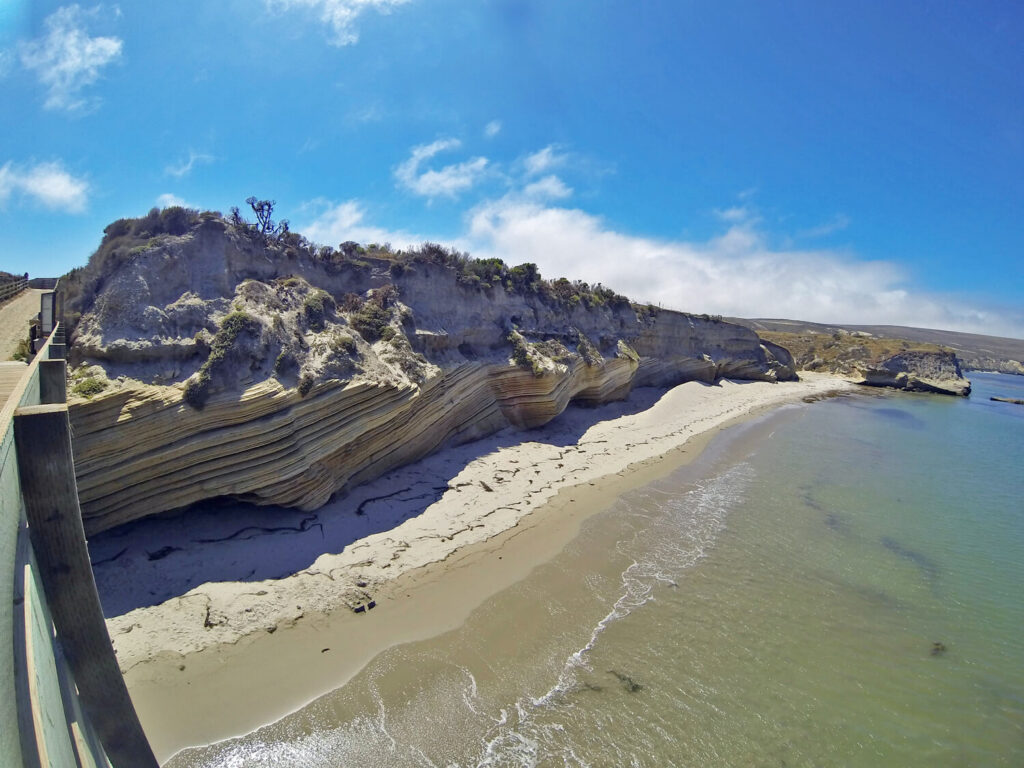
Photo by Chris Stankee
We do not usually find too many such issues in our friends—because we would not choose friends like that—but there is the family you do not choose, as well as, say, inlaws and coworkers. People whose company you are compelled to share for a good part of your life, for reasons other than . . . personal magnetism.
Albert Camus famously said, “Hell is other people,” and we all know what he meant. These days when people around me behave in obliviously upsetting ways, I try to remind myself, “He can’t help doing what he can’t help doing.”
Same with “she,” of course.
Part of this generous insight derives from the philosopher Philo, reminding us to “Be kind, for everyone you meet is fighting a hard battle.” Or Aldous Huxley, whose sum of advice at the end of a long and contemplative life was given almost apologetically, “Try to be a little kinder.”
Apart from being more generous with judgments and reactions, the only other option open to this reporter is to watch for such feelings and behavior in myself, and try to moderate them. Try to be a little kinder. A great French teacher named Jean Gallia once outlined his views to me and the Guys at Work: “Don’t judge people for something they can’t change.” There is wisdom there, but it leaves . . . “room for improvement.”
Because, after all, people can change their wilful ignorance, their nonsensical beliefs, and especially their anti-social behavior. Many could be helped in the battle against their self-defeating demons by therapy—however long it might take—but for one reason or another, they won’t. Too bad for them—and for the rest of us who have to live with them.
For myself, I will keep chasing mirages, getting excited about places and finding a way to visit them (including the other three Channel Islands), then sitting down to try to share them in words and images.
Because I can’t help doing what I can’t help doing. And I like it.
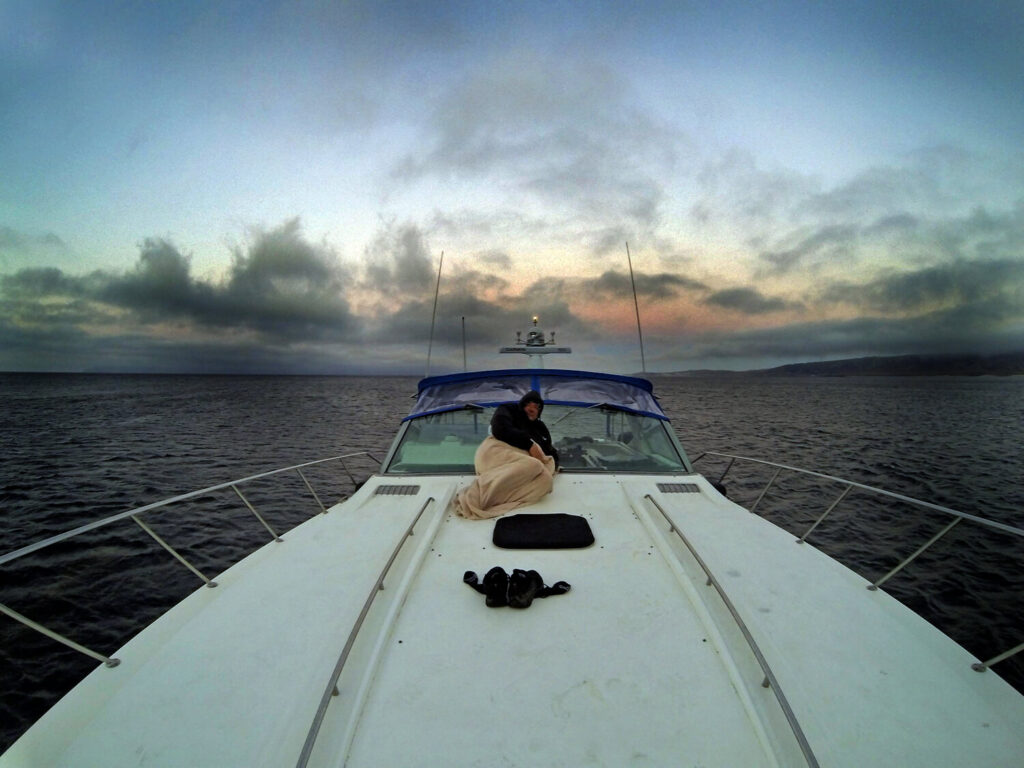
Photo by Chris Stankee

